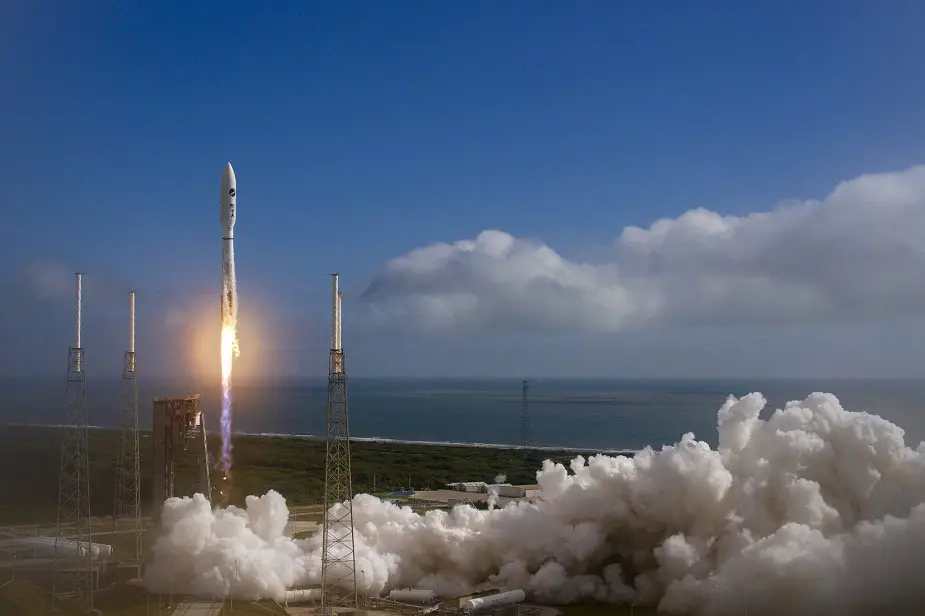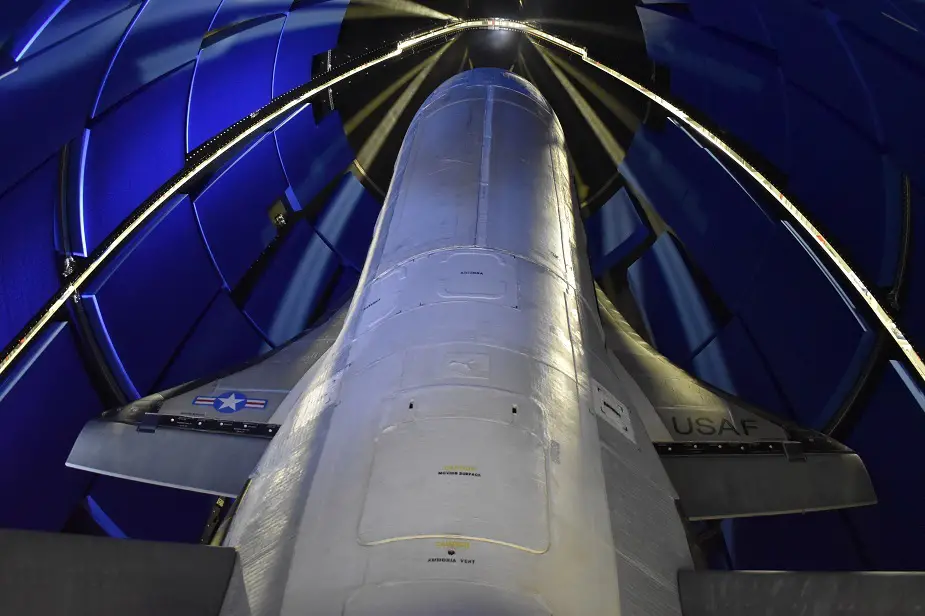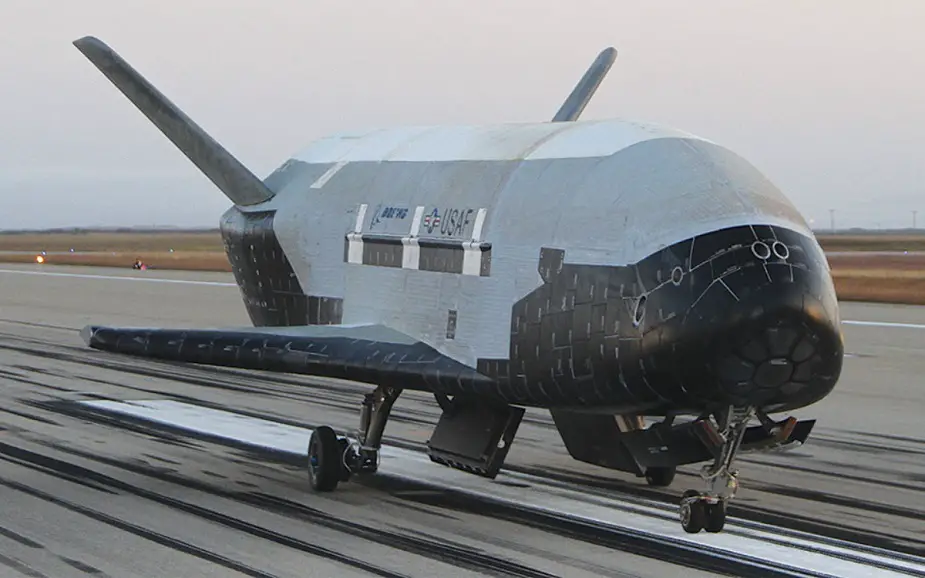Breaking news
X-37B spacecraft launches in second mission for US Space Force.
On May 17, the Boeing-built X-37B autonomous spaceplane launched on top of a uniquely configured United Launch Alliance Atlas V rocket.
Follow Air Recognition on Google News at this link
 A ULA Atlas V rocket carrying the USSF-7 mission for the U.S Space Force lifts off from Space Launch Complex-41 at 9:14 a.m. EDT on May 17, 2020 (Picture source: United Launch Alliance)
A ULA Atlas V rocket carrying the USSF-7 mission for the U.S Space Force lifts off from Space Launch Complex-41 at 9:14 a.m. EDT on May 17, 2020 (Picture source: United Launch Alliance)
Boeing is the prime contractor for the X-37B spaceplane and facilitates the integration of all experiments into the vehicle ensuring they receive the correct power, thermal and data services required. Boeing also works to identify future reusable platform experiment opportunities on each mission.
The X-37B’s sixth mission is the first to use a service module with additional payload capability to support a variety of experiments for multiple government partners. The mission will deploy FalconSAT-8, a small satellite developed by the U.S. Air Force Academy and sponsored by the Air Force Research Laboratory, to conduct experiments on orbit. Further, two NASA experiments will study the impact of radiation and other space effects on certain materials and seeds used to grow food. Another experiment by the Naval Research Laboratory will transform solar power into radio frequency microwave energy which could then be transmitted to the ground. In addition, the mission will test reusable space vehicle technologies.
The X-37B first launched in April 2010. Originally designed for missions of 270 days duration, the X-37B has set endurance records during each of its five previous flights. Most recently, X-37B spent 780 days on orbit before returning to Earth in October 2019.
 Encapsulated X-37B Orbital Test Vehicle for United States Space Force-7 mission (Picture source: Boeing)
Encapsulated X-37B Orbital Test Vehicle for United States Space Force-7 mission (Picture source: Boeing)
 The ability to test new systems in space and return them to Earth is unique to the X-37B program and enables the U.S. to more efficiently and effectively develop space capabilities necessary to maintain superiority in the space domain (Picture source: Boeing)
The ability to test new systems in space and return them to Earth is unique to the X-37B program and enables the U.S. to more efficiently and effectively develop space capabilities necessary to maintain superiority in the space domain (Picture source: Boeing)
“The X-37B has shifted the paradigm and redefined efficiency in space development, said Jim Chilton, Boeing Space and Launch senior vice president. “The rapid technology advancements enabled by the program will benefit the entire space community and influence the next generation of spacecraft design.”
The vehicle features many elements that mark a first use in space, including:
- Avionics designed to automate all de-orbit and landing functions.
- Flight controls and brakes using all electro-mechanical actuation; no hydraulics on board.
- Built using a lighter composite structure, rather than traditional aluminum.
- New generation of high-temperature wing leading-edge tiles and toughened uni-piece fibrous refractory oxidation-resistant ceramic (TUFROC) tiles.
- Advanced conformal reusable insulation (CRI) blankets.
- Toughened uni-piece fibrous insulation (TUFI) impregnated silica tiles.
The X-37B program is a partnership between the Department of the Air Force Rapid Capabilities Office and the United States Space Force. Boeing program management, engineering, test and mission support functions for the Orbital Test Vehicle (OTV) program are conducted at Boeing sites in Southern California and Florida.


























